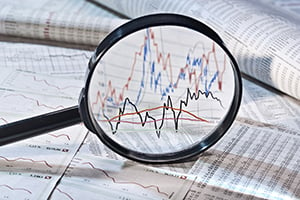 There has been a great deal of coverage on slowing growth. Indeed, on this blog we have looked at signs that the recovery may be close to the end. What that means, of course, is that a recession may well be in the cards in the next couple of years. Although we are not there yet, now is a good time to take a closer look at what it could look like. After all, it has been more than 10 years since we last had a recession, and that one was not typical.
There has been a great deal of coverage on slowing growth. Indeed, on this blog we have looked at signs that the recovery may be close to the end. What that means, of course, is that a recession may well be in the cards in the next couple of years. Although we are not there yet, now is a good time to take a closer look at what it could look like. After all, it has been more than 10 years since we last had a recession, and that one was not typical.
Recession defined
Let’s first think about what a recession is. The formal definition, and determination, of a recession comes from the National Bureau of Economic Research. For common use, however, a recession is defined as two consecutive quarters of negative economic growth. If we get that, we have a recession. Note that it does not have to be a severe contraction, just a decline. As such, there can be a big difference in what a recession means, which is a key point when we look to the next one.
2008 or 2000?
2008 was the Great Recession, the worst since the 1930s. The fear is that the next one will be just as bad. But that prospect is unlikely. 2008 involved huge imbalances in the banking system, which took what would have been an ordinary recession and turned it into a crisis. Now, although we certainly have imbalances, they are not concentrated in the banking system. More, much of the post-crisis legislation that limited bank risk is still in place, which should help minimize any damage. Because of these conditions, the next recession is likely to resemble 2000 more than 2008—a slowdown rather than a crisis.
The 2000 comparison is apt. The economy and the financial markets look much like they did then. If that comparison holds, then we should see the economy contract, but not nearly as severely as in 2008, although the financial markets may take much more of a hit. Worth noting is that, despite all the angst around the market declines of 2000, the fact that the economic decline was moderate helped lay the groundwork for the later financial market recovery.
Back to economic basics
If we look at the basics of the economy, we see the same thing. If job growth slows, employment will still be high and unemployment low by historical standards. If confidence drops by enough to signal trouble, as we discussed earlier this week, it will still be high. In other words, because things have been so good, we might enter a recession and find that things are still pretty good. These conditions should help keep the recession mild.
The key takeaway here is that recessions are not usually like 2008. That was a crisis, and the ingredients of a similar crisis don’t seem to be in place. Even if the economy slows enough to qualify for a recession, that doesn’t mean things will collapse. A recession at this point is something we need to watch for, not something we need to panic about.
A normal recession?
Even for the markets, a recession and consequent declines would be something to ride out, as in 2000—and not to panic over as in 2008. Periodic bear markets are part of how the system works, and just one more thing to take in stride.
We have not had a normal recession in almost 20 years, and we need to keep our expectations aligned with what is likely to happen, and not with what happened in 2008. Now is the time to game out what the next recession will look like. Fortunately, it is not likely to be that bad.


 Print
Print

